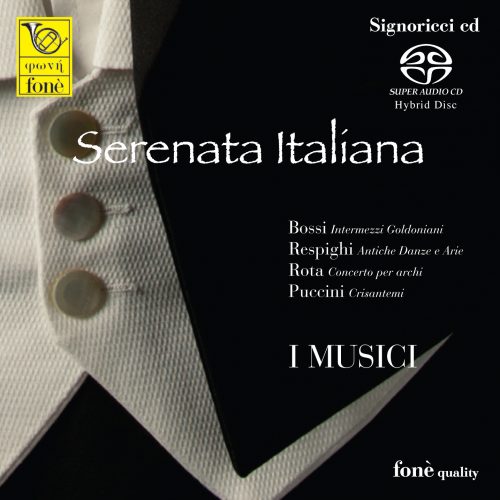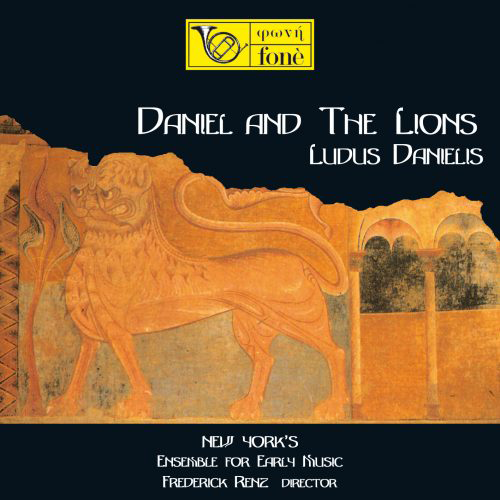Could a serenade of the 1900s possibly exist? Could two, apparently contradictory terms, be compatible? (They were accepted as such for a long period). How does one reconcile the expression of a selected poetic and musical form which was the favourite vehicle of an amorous relationship (that we often see as cloying), with the longing for renewal, for technology, with the magnificent and progressive destiny of the beginning of the 20th century? This is the riddle that I Musici tried to answer with the Serenata italiana (Italian serenade). The work takes us on a listening course covering a temporal arc from the end of the 1800s to the 1960s. Arturo Toscanini was the mentor who shaded the protagonists’ lives in various ways. First and foremost was his enthusiastic approval of the group I Musici, which in 1952, had just got started. The great conductor’s presence frequently hovered between the biographical and the artistic vicissitudes of the composers chosen to represent the Italian instrumental background. Toscanini conducted three movements of the Intermezzi goldoniani (1901-1905) by Marco Enrico Bossi (Salo’, 1861 – during the crossing from New York to Le Havre, 1925) on 8th April 1905 in the Teatro Comunale in Bologna, while the first performance in its entirety was heard only in 1910. These Intermezzi dedicated to Wilhelm Weber by the composer, also refer to literary influences in the texts, not so much by Carlo Goldoni, but by 18th century Venetian culture itself. The work consists of a suite of dances in six movements which follow the baroque tradition, revised and yet effective and, because of their difficulty, rarely heard. The composition is a jewel that refers to the 18th century nachtmusik tradition. It is in suite form with marches at the opening and at the end of the Prelude and Minuetto but it freely interprets the characteristics of antique dances, the courtly tidiness (Gagliarda and Coprifuoco), going on to yearn for the orderly precision of the 19th century salon (Serenatina) or the severe contrapuntal structure (Burlesca). The connection to the title is rather transient since the intermezzo form is probably only a leftover of the 1700s theatre tradition (connection to Pergolesi is obvius) that saw the overbearing emergence and affirmation of the comic forms, not dissimilar to what happened particularly to the tools Goldoni uses in comic theatre. Almost all of the composers represented on the CD (except Puccini) refer to dances, which characterises and unites them. This doesn’t seem strange to us since, from the point of view of the traditional instrumental development, they had a fundamental role and were an important predecessor for the birth of the musical tradition that freed itself from the heaviness and conditioning of vocal music. Even in Respighi’s case (Bologna, 1879 – Roma, 1936), the past relives through the connection to the court dances of the 16th century tradition and also in this case we are looking at an assent that is not by chance. His interest in Gregorian chant and his love for Monteverdi was known. The interest in antique arias was part of a rather complex project, seeing that the third suite on the CD, composed in 1931, follows the first from 1917 and the second from 1923.
Tracklist
Please note that the below previews are loaded as 44.1 kHz / 16 bit.Total time: 01:03:45
Additional information
| Label | |
|---|---|
| SKU | SACD063 |
| Qualities | |
| Channels | |
| Artists | |
| Composers | |
| Genres | |
| Original Recording Format | |
| Cables | Signoricci |
| Digital Converters | DCS AD/DA |
| Microphones | Neumann U47,U48, M49 |
| Producer | Giulio Cesare Ricci |
| Recording Engineer | Giulio Cesare Ricci |
| Recording location | Teatro Comunale Francesco Paolo Tosti |
| Recording Type & Bit Rate | DSD64 |
| Recording Software | Pyramix |
| Instruments | |
| Release Date | September 7, 2014 |
Only logged in customers who have purchased this product may leave a review.






Reviews
There are no reviews yet.